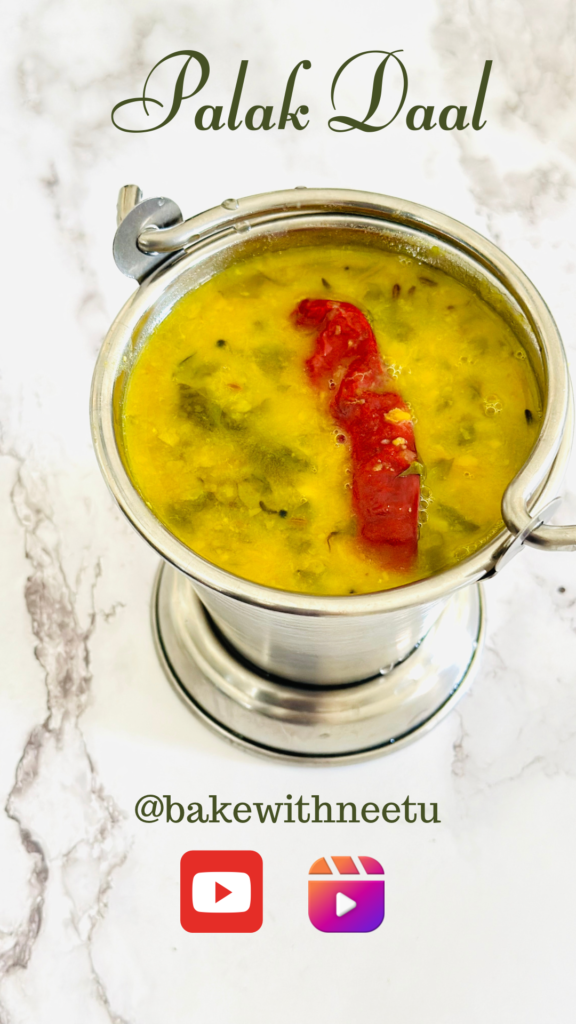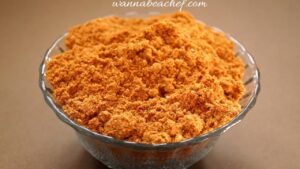Palak Tuwar Daal, a staple in Indian households, combines the nutritional powerhouse of spinach with the hearty, protein-packed Tuwar daal (split pigeon peas). This dish is not just a testament to the rich tapestry of Indian cuisine but also to its emphasis on meals that are both wholesome and flavorful. Perfect for anyone looking to incorporate more plant-based proteins into their diet, this recipe promises a deliciously spicy and savory experience.
The Health Benefits
Spinach is a superfood, loaded with vitamins A, C, and K, iron, and antioxidants, supporting everything from bone health to immune function. Tuwar daal, rich in protein and fiber, contributes to heart health and digestion. Together, they make a dish that’s as good for your body as it is for your soul.


The Roots of Palak Pappu
Originating from the verdant landscapes of South India, Palak Pappu, or spinach dal, is more than just a dish; it’s a celebration of the region’s agricultural bounty and its people’s knack for turning simple ingredients into culinary masterpieces. Lentils and spinach, the stars of this dish, are staples in Indian diets, revered not only for their nutritional value but for their versatility in cooking.
The Nutritional Canvas
Lentils, particularly Tuwar Dal (split pigeon peas), are a powerhouse of protein, essential amino acids, and dietary fibers, making them an excellent food for managing blood sugar levels and enhancing digestive health. Spinach, on the other hand, is a treasure trove of vitamins (A, C, K), minerals (iron, magnesium), and antioxidants, known for its benefits to eye health, reduced oxidative stress, and blood pressure regulation.
Preparing the Palak Pappu
Ingredients:
• 1 cup Tuwar Dal, soaked
• 2 green chilies, slit
• 1 cup spinach, chopped
• 2 cups water
• 1/4 tsp turmeric powder
• 1/2 cup tamarind pulp
• 1 tsp salt
• 1/2 tsp red chili powder
For the Tempering:
• 1/2 tsp mustard seeds
• 1/2 tsp cumin seeds
• 1 tbsp garlic, minced
• 2 stems curry leaves
• 2 dry red chilies
• 1 tsp hing (asafoetida)
Cooking Steps:
1. Pressure Cooking the Dal: Begin by combining the soaked Tuwar Dal, green chilies, chopped spinach, water, and turmeric powder in a pressure cooker. The inclusion of turmeric not only adds a gentle earthiness to the dal but also its anti-inflammatory and antioxidant properties. Cook this mixture until the dal is tender and the spinach has melded into it, creating a harmonious base for our dish.
2. Enriching with Tamarind: Once the dal is cooked and while still warm, stir in the tamarind pulp, salt, and red chili powder. Tamarind, a quintessential ingredient in South Indian cooking, introduces a tangy depth that balances the dal’s earthiness, while the chili powder adds a subtle kick, igniting the dish with layers of flavor that are complex yet comforting.
3. The Art of Tempering: The tempering, or tadka, is where the magic truly happens, transforming the dal from simple to sublime. Heat oil in a small pan, add mustard and cumin seeds, and wait for them to sputter, releasing their aromatic oils. Then, add minced garlic, dry red chilies, and curry leaves, sautéing until the garlic turns golden. The hing, or asafoetida, is then sprinkled in, a pinch of this potent resin goes a long way in adding a umami depth that’s irreplaceable in many South Indian dishes. This fragrant oil is then poured over the dal, infusing it with a smoky, spicy essence that’s the hallmark of a great Palak Pappu.
Serving the Palak Pappu
In South Indian homes, Palak Pappu is more than just a meal; it’s a means of bringing family together, served hot with a side of steamed rice or warm, fluffy chapatis. It’s often accompanied by a dollop of ghee, whose nutty richness cuts through the tartness of the tamarind and the heat from the chilies, rounding out the flavors into a perfect symphony.
The Cultural Tapestry
Palak Pappu is not just a dish; it’s a narrative of resilience, of how the simplest ingredients can be woven into a tapestry of taste that speaks volumes of the land’s heritage. Each family has its own version, a testament to the recipe’s flexibility and the personal touch that goes into its making. It’s a dish that carries within it stories of monsoon seasons, of harvests, of communal meals that bind communities together.
The Final Stir
As we reach the end of our culinary journey, it’s clear that Palak Pappu is more than the sum of its parts. It’s a celebration of health, taste, and tradition, embodying the spirit of South Indian cooking. It teaches us that good food is not just about the complexity of ingredients but the love with which it is made.
In preparing this dish, we don’t just nourish our bodies but also connect with a culture that’s rich, vibrant, and deeply rooted in the rhythm of nature. So, the next time you sit down to a bowl of Palak Pappu, remember, you’re not just eating a meal; you’re partaking in a legacy that’s centuries old, one that’s as enduring as the spices that flavor it and as comforting as the warmth with which it’s served.




